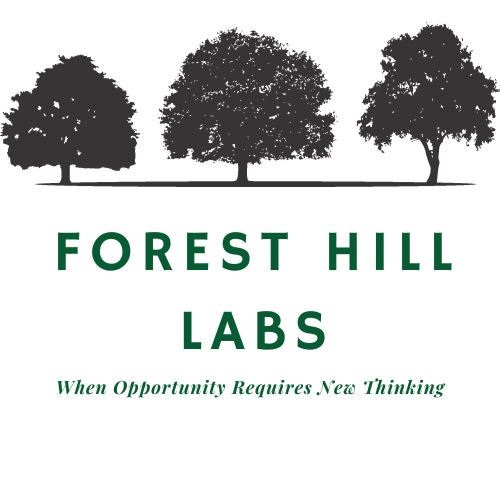Reimagining FDA Regulation of A.I. & Digital Medical Products (Part 1)
By Robert James Horne & Dylan Reid / Published January 8th, 2024
Key Takeaways
A regulatory conundrum at the FDA - how can the agency determine whether A.I. in healthcare is “safe and effective” for use if the product is designed to change its own functional nature after market approval? - is creating an opportunity to rewrite the market rules governing the healthcare sector.
Congress and the FDA are expected to update these rules in the next five years when the FDA User-Fee law is reauthorized by Congress.
This article explores key legal and regulatory questions ahead of our recommendations on how to reform the market.
Introduction
The digital health market holds great potential to remake the health care sector but current federal statutes and regulations governing the market are incapable of taking full advantage. The Administration and Congress are currently exploring updates to the FDA’s regulatory approach to address these concerns and others.
The authors were responsible for informing the current statutory and regulatory approaches used by the agency (the Software Act) and raised concerns about the ability of the FDA to regulate digital medical products effectively using the medical device statute at that time.
Today is a new day, however, and in keeping with tradition we would like to offer our thoughts on how to approach regulatory modernization.
For the sake of comprehension, we have reduced some significant legal and regulatory concepts to a point where exceptions exist, and minor qualifications are necessary but were not included for the sake of space. If you encounter one of these ‘rounding errors’, please excuse the shortcut.
The FDA Needs New Statutes to Regulate A.I. & Digital Medical Products Well
Dr. Jeff Shuren, head of the FDA center in charge of medical device regulation, warned an audience in May 2022 of regulatory barriers to digital health products if Congress failed to grant the agency new statutory authorities.
“We can’t move to really more modern regulatory frameworks without changes in federal law. And we know that for these kinds of technologies – software as a medical device – the regulatory frameworks of today were designed yesterday, when Congress was not thinking of software-based devices,” he said, adding that current frameworks aren’t “fit for purpose for modern-day software-based technologies.”
This is a significant statement considering Dr. Shuren testified before the Energy and Commerce Committee in 2012 that the medical device statutory authorities were sufficient to regulate digital medical products.
“It shouldn’t matter if the device is on a desktop versus on a mobile application. It is still a device. It is something we already regulate. That doesn’t change it.”
He wasn’t alone. Medical device trade associations and other recognized thought leaders at the time agreed with Dr. Shuren. We know this because (Robert) was managing the issue and legislation (what eventually became the Software Act) for committee Chairman Fred Upton at the time.
It is a credit to Dr. Shuren and his team at the FDA has developed some innovative approaches to regulating digital medical products over the past decade. Further, we are encouraged by the creation of a task force to make policy recommendations to the agency for updating its regulatory approach. These are positive and significant steps, and we commend the FDA and Dr. Shuren for their continued efforts.
Below we begin to lay out our thinking on how to update the FDA for digital medical products.
The FDA’s Regulatory Conundrum
The FDA was created by Congress to ensure that medical products are “safe and effective” for use by humans before hitting the market. FDA staff are required by statute to review the findings of a series of clinical trials conducted by a product manufacturer and determine whether the data supports a conclusion that it is “safe and effective” for use.
The agency currently satisfies approval questions for medical products using a regulatory pathway informed by data from human clinical trials to ascertain whether a product should be approved for sale. Products shown to be safe and effective when used are approved, and those not meeting this regulatory threshold are not. This is true for medical devices requiring testing by the agency to prove safety and effectiveness.
Digital medical products are largely held to the current standards for a medical device with differences established by provisions of the Software Act. The law’s intent sought to differentiate stand-alone digital medical products from traditional medical devices for the first time in order to pave the way for more regulatory modernization in the future.
The regulatory concern for A.I. is when the product acts upon, or produces for others, faulty actions or conclusions that can result in harm to the patient during a medical care encounter.
Please Note: This remainer of this article uses Artificial Intelligence (A.I.) to represent a larger universe of digital medical products.
Getting Our Terms Straight: A.I. Terminology
There are many terms popping up to describe A.I. these days. Generative A.I. is the latest hyper-specialized word to differentiate a subclass of Machine Learning (ML) A.I. which is itself a subclass of A.I. It can get very confusing.
Instead, we are only using two terms to make the article more relatable:
1) “Fixed-Function” – A.I. products where there exists a high-level of regulatory confidence that the functional nature of an A.I. medical product will stay the same over its lifetime; and
2) “Growth-Function” – A.I. products designed to self-develop from learning that can or will change the functional nature of the product post-FDA approval.
Reimagining the FDA: Statutory and Regulatory Questions for Digital Medical Products
If the entire FDA regulatory process for reviewing and approving medical devices could be reduced to a single question, it might look something like this:
Q: Does the FDA expect that a medical product will be safe to use and function effectively as intended for the life of the product?
The FDA has gotten very good at answering this question for traditional medical devices. However, the question becomes more complicated when it comes to A.I.
Consider one of the threshold regulatory questions facing the agency (in our own words):
Q: Can the FDA determine whether an A.I. product is “safe and effective” for use if the product is designed to change its own functional nature after approval?
Answering this question may be uncomfortable for experts who have spent years knowing the current system but predicting whether a growth-function A.I. will be safe and effective in the future seems like an impossible task.
Further, the newness of regulating A.I. and digital medical products means that regulators don’t have much experience to rely upon. This lack of regulatory experience is a disadvantage capable of inhibiting the agency because of liability and safety issues associated with getting the “safe and effective” question wrong.
Q: Should the FDA be using the Current Medical Device Definition to Regulate A.I. Products?
Yes…and No.
Let’s suspend reality for a moment and assume that the FDA can predict to a near-certainty whether a growth-function A.I. medical product will be safe and effective in the future.
One issue with the medical device definition is that it acts like a catch-all category for medical products that fit into another defined category (ex. drugs or biologics). Another is the fact that the arguments for using the existing medical device definition for growth-function A.I. appear to go beyond even the broad parameters of the statute.
As an example, the FDA’s regulatory claim is that A.I. connects to a medical device and therefore is a medical device. Using that approach, a good lawyer could one day make the claim that the authors are medical devices because everything connects to everything else, or the human body is part of the medical care process. The argument is beginning to strain even the broad contours of the medical device definition.
Further, using the current medical device definition requires the FDA to adopt all of the statutory requirements that cannot be addressed through regulation. The FDA has done a wonderful job of establishing a unique pathway for digital using its existing statutory authority, but it appears the agency has exhausted what can be achieved with regulatory flexibility.
Current “Safe and Effective” for A.I.: A Regulatory Liability?
The FDA isn’t perfect when predicting how products will perform after approval - no agency can be. However, the agency’s experience over the years allows it to get close to this benchmark. Still, numerous legal threats and product liability lawsuits are leveled at the agency despite this enviable track record. The threat of a lawsuit can curtail the ability of agency staff to make tough decisions in uncharted territory. Now consider agency staff on an issue like growth-function A.I. where: 1) there exists little agency experience regulating A.I.; and 2) the product is expected to self-develop after it has been approved for sale.
We don’t need legislative or regulatory experts to see the problem. If the FDA proceeds with its current standard for determining safety and effectiveness, many A.I. medical products may be left behind because of this ‘chicken-or-egg’ regulatory scenario.
The authors contend that a modern regulatory pathway for A.I. and other digital medical products more in line with their functional nature. We have some thoughts that may be valuable to the public.
Conclusion
We are not suggesting Congress do away with medical device center regulation, but it is clear that statutory updates to how the center applies its regulatory authorities can benefit from updates. Redeveloping federal statutes by first updating the philosophies upon which these statutes rest is a once-in-a-generation opportunity to improve entire markets by reestablishing their statutory foundations.
Congratulations to Congress and the FDA for moving forward on this important issue. We flagged new statutory ideas a decade ago and hope to do our part again.
Robert Horne is a Partner at Forest Hill Labs. More on Robert Horne here.
Dylan Reid is a Partner at Forest Hill Labs. More on Dylan Reid here.


